Filtered By: Lifestyle
Lifestyle
A walk through Rizal Park on the National Hero’s 154th birthday
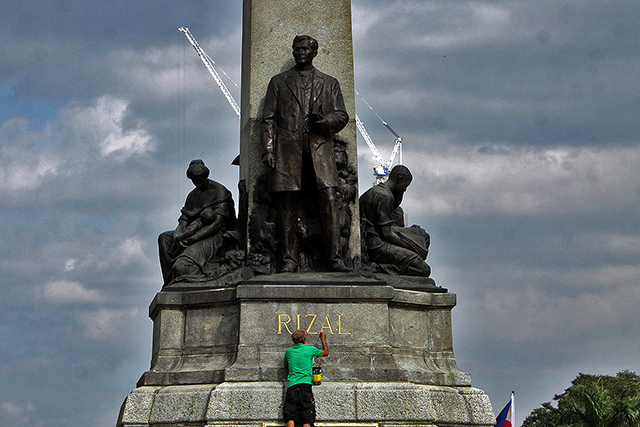
Ernesto Ruiz, a worker from the National Parks Development Committee, repaints the marker on the Rizal Monument at Luneta Park on December 28, 2014 in preparation for the national hero's 118th death anniversary on December 30. Danny Pata
Bagumbayan, the site where Rizal uttered his last words—"consummatum est"—was renamed in his honor in 1913.
For Rizal's 154th birth anniversary on Friday, June 19, GMA News Online presents facts Filipinos should know about the historic Rizal Park.
Rizal Park fast facts
Location: Roxas Boulevard, Manila
Borders: Taft Avenue, T.M.Kalaw, Roxas Boulevard, and Padre Burgos; the Relief Map of the Philippines and Quirino Grandstand
Area: 58 hectares
Maintained by: National Parks Development Committee (NPDC)
Estimated tourist arrival per year: 8.2 million
Recognition: First urban park in Asia
From Bagumbayan to Luneta
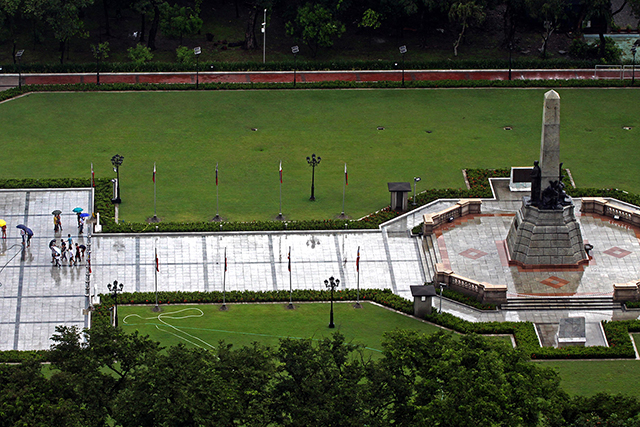
The Rizal Monument is now one of the world's threatened heritage sites according to the 18th General Assembly of International Council on Monuments and Sites (ICOMOS), which said that the monument is now considered 'in danger and in urgent need of government attention and necessitating protection.' Danny Pata
Its marshy grounds remained a "no man's land" until 1820, when the Paseo de Luneta was built adjacent to the beach. It became the place to be for Manila's elite.
It also became the execution ground for the "rebels and mutineers" against Spanish rule.
Between 1823 and 1897, 158 patriots and martyrs were felled on the square by Spanish infantrymen, including Fathers Gomez, Burgos, and Zamora as well as Rizal himself.
According to the National Historical Commission of the Philippines (NHCP), there were some 880 people martyred at the old Bagumbayan during the Spanish period.
The rise of the Rizal Monument
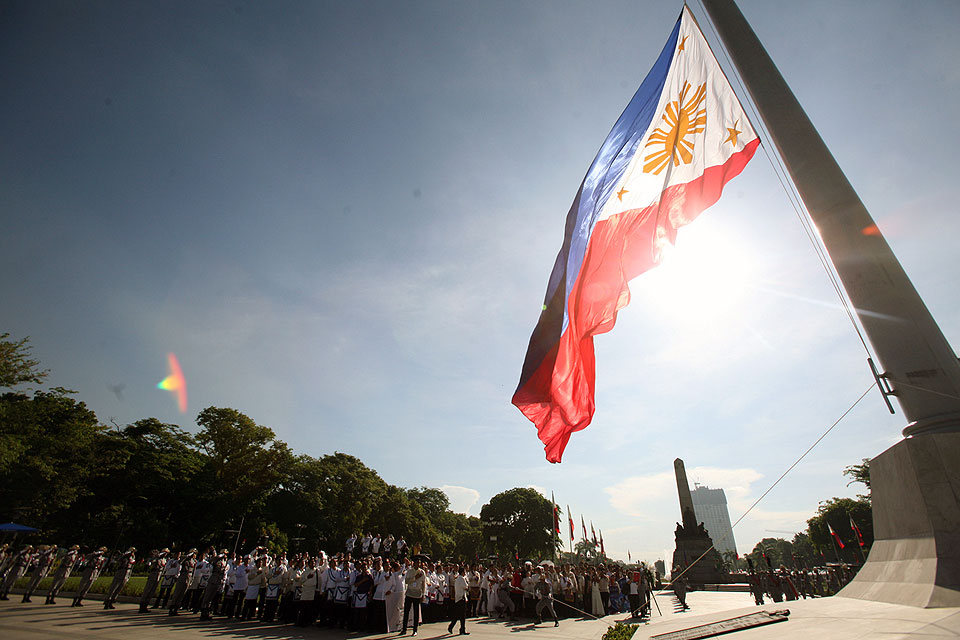
The Philippine flag is hoisted near the Rizal Monument on Friday, June 12, 2015, to commemorate Independence Day. Danny Pata
A committee, which included Rizal's brother Paciano Rizal, was tasked to raise funds for the monument. The estimated cost of the monument was P100,000, including prizes for the winners of the design contest.
When the campaign closed in August 1912, the amount collected had reached P135,195.61, including P30,000 donated by the insular government.
An international design competition was held from 1905 to 1907, during which sculptors from Europe and the United States were invited to submit entries. The committee received a total of 40 entries.
Italian artist Carlo Nicoli won the grand prize of P5,000 for its design, "Al Martir de Bagumbayan." Its design was neo-classical, and the plans described an 18-meter-tall monument with a base of gray Italian marble and a pedestal of white Italian marble.
However, Nicoli was not able to post a construction bond, so the honor of designing the monument went instead to the second prize winner, Swiss sculptor Richard Kissling.
His design, "Motto Stella"—"guiding star" in Latin—was said to be opposite of the grand prize winner's elaborate design.
The monument, measuring 14 meters high from the platform, features a bronze Rizal facing the sea while holding books that are said to his novels "Noli me Tangere" and "El Filibusterismo." The obelisk rising from the center of the monument is surrounded by the allegorical figures of a mother rearing a child and two boys reading books, also bronze.
The three gold-plated stars on top of the obelisk represent Luzon, Visayas, and Mindanao.
A plaque in front of the pedestal reads, "To the memory of José Rizal, patriot and martyr, executed on Bagumbayan Field December Thirtieth 1896. This monument is dedicated by the people of the Philippine Islands."
The park would not only bear a statue of the hero, but would also house his remains. Rizal had been buried in the Paco Park cemetery, but his sister Narcisa had him exhumed in 1898. She kept his remains in an urn in the family home in Binondo until they were re-buried in Luneta.
During the cornerstone laying on December 30, 1912, the Rizal's remains were interred beneath the monument.
The shrine was finally unveiled and Luneta was renamed Rizal Park on December 30, 1913, Rizal’s 17th death anniversary.
Present and future
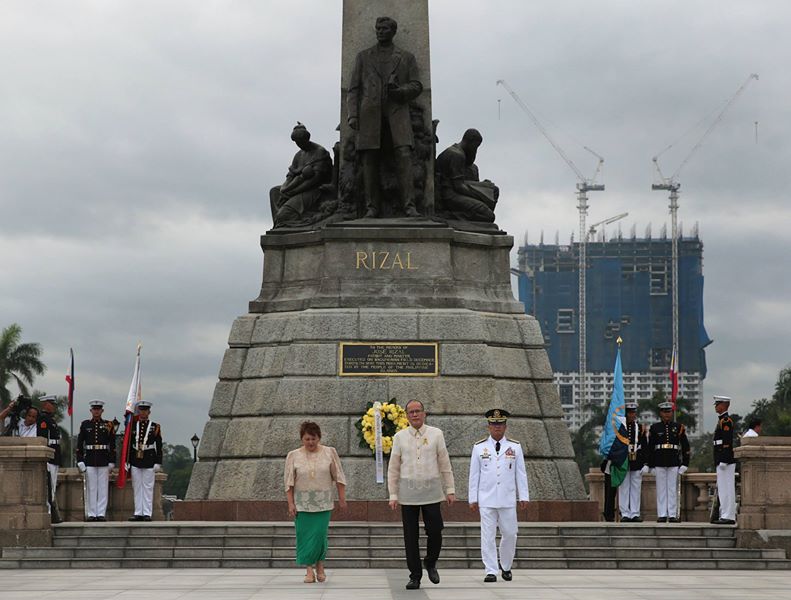
The Torre de Manila construction is seen behind the Rizal Monument in this photo of President Benigno Aquino III laying a wreath at the monument in commemoration of Jose Rizal's 118th death anniversary on Dec. 30, 2014. Official Gazette of the Republic of the Philippines
The resolution from ICOMOS was sought in light of the construction of the Torre de Manila, a residential condominium project that is seen to mar the vista or visual corridors of the Rizal Monument. Last Tuesday, the Supreme Court issued a temporary restraining order stopping the construction of the 46-storey building.
Far from being a sterile monument to a man long dead, Rizal is a pulsing part of the city and of national life. It is one of Metro Manila's few green spaces remaining, a vital lung in an increasingly clogged urban sprawl. It is also where people gather to see Popes, to protest government corruption or celebrate milestones, or simply to be with each other. This is one way we honor Jose Rizal—by having his park, and his monument, be an important part of our ives.
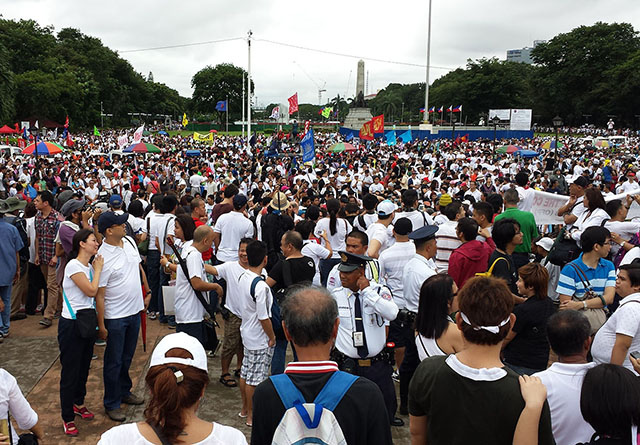
Thousands of people from all walks of life gathered at Rizal Park in August 2013 to join the Million People March against pork barrel. Kim Luces
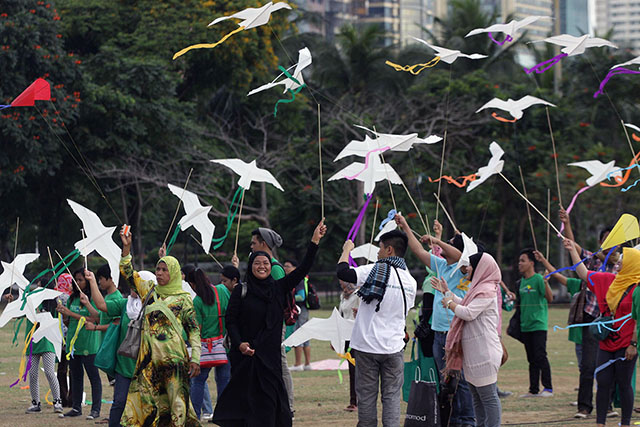
Peace advocates from various sectors flew kites at the park on March 27, 2014 in support of the peace deal signed by the government and the MILF at Malacañang. Danny Pata
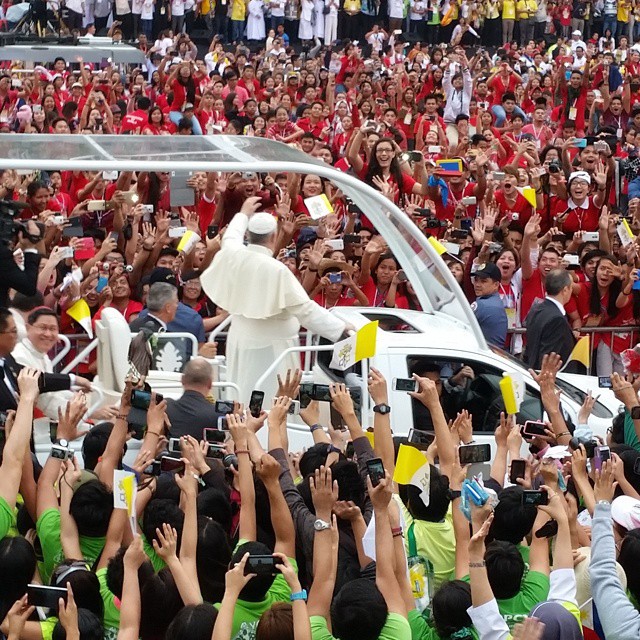
During his five-day visit to the country, Pope Francis celebrated Mass at Quirino Grandstand and also went around the grounds to bless the faithful on January 18, 2015. Kara David

A family shares a happy moment at Luneta in Manila on Sunday, two days after the national park hosted hundreds of Filipinos gathered there to mark the country's 117th Independence Day celebration last June 12. Danny Pata
More Videos
Most Popular




